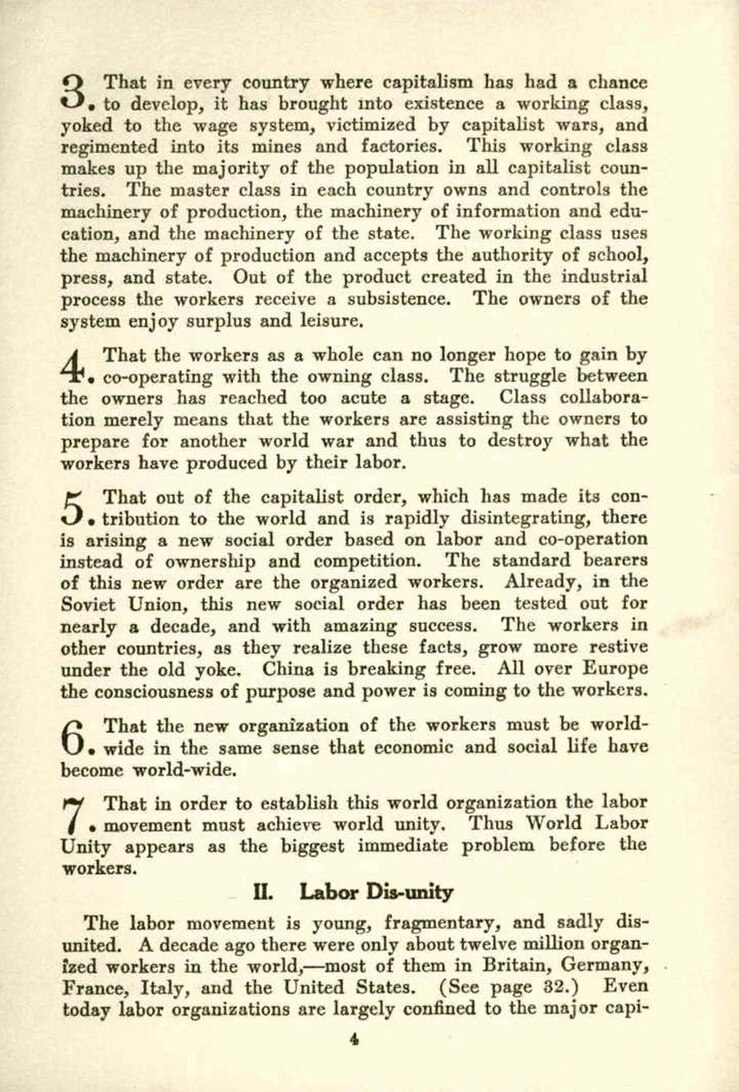3. That in every country where capitalism has had a chance to develop, it has brought into existence a working class, yoked to the wage system, victimized by capitalist wars, and regimented into its mines and factories. This working class makes up the majority of the population in all capitalist countries. The master class in each country owns and controls the machinery of production, the machinery of information and education, and the machinery of the state. The working class uses the machinery of production and accepts the authority of school, press, and state. Out of the product created in the industrial process the workers receive a subsistence. The owners of the system enjoy surplus and leisure.
4.That the workers as a whole can no longer hope to gain by co-operating with the owning class. The struggle between the owners has reached too acute a stage. Class collaboration merely means that the workers are assisting the owners to prepare for another world war and thus to destroy what the workers have produced by their labor.
5. That out of the capitalist order, which has made its contribution to the world and is rapidly disintegrating, there is arising a new social order based on labor and co-operation instead of ownership and competition. The standard bearers of this new order are the organized workers. Already, in the Soviet Union, this new social order has been tested out for nearly a decade, and with amazing success. The workers in other countries, as they realize these facts, grow more restive under the old yoke. China is breaking free. All over Europe the consciousness of purpose and power is coming to the workers.
6.That the new organization of the workers must be world-wide in the same sense that economic and social life have become world-wide.
7.That in order to establish this world organization the labor movement must achieve world unity. Thus World Labor Unity appears as the biggest immediate problem before the workers.
II. Labor Dis-unity
The labor movement is young, fragmentary, and sadly dis-united. A decade ago there were only about twelve million organized workers in the world,—most of them in Britain, Germany, France, Italy, and the United States. (See page 32.) Even today labor organizations are largely confined to the major capi-
4
